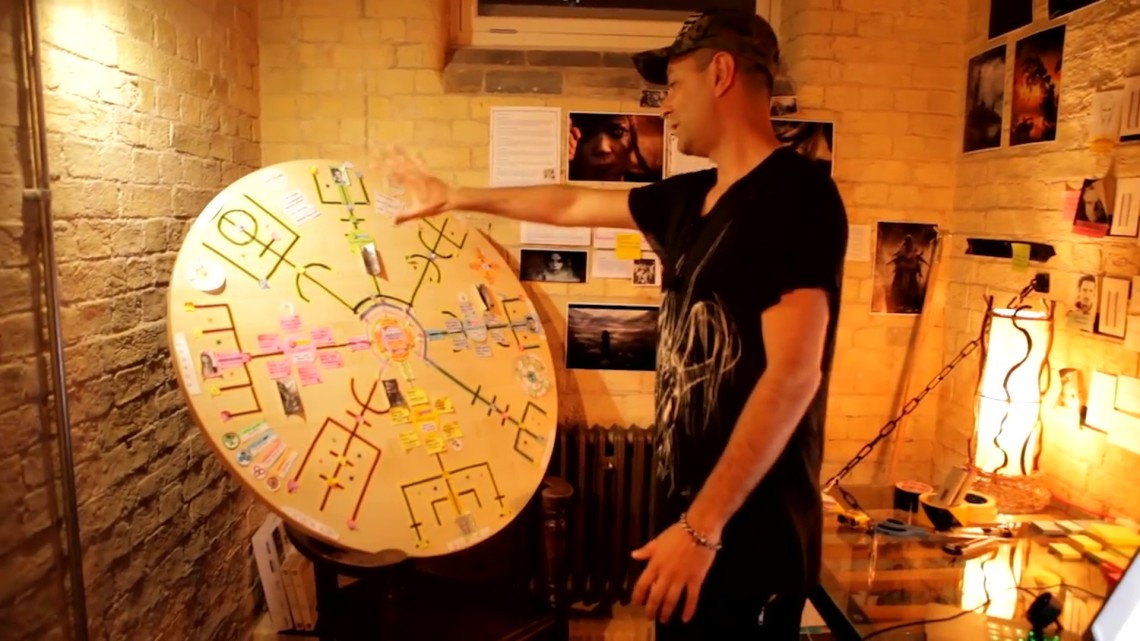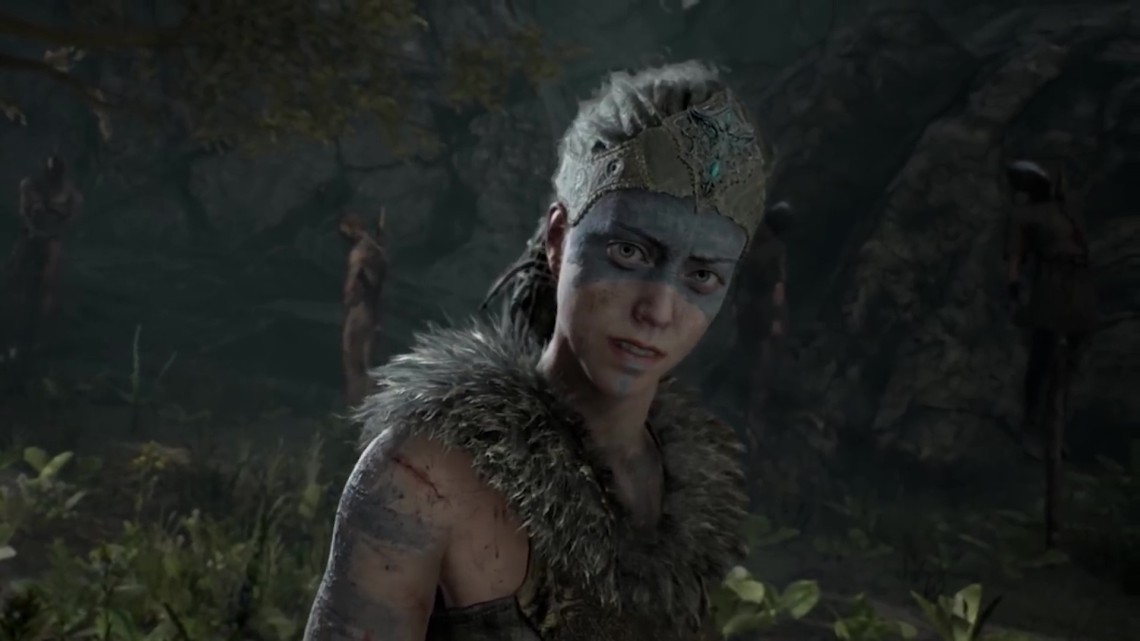Even though studios are talking more about how they make their games, they still don’t really talk about how they write them. It’s not surprising, because despite how much better they’ve have gotten at telling them, games don’t need stories to be entertaining.
However, during the development of Hellblade: Senua’s Sacrifice, game studio Ninja Theory kept a video diary covering the game’s creation. This featured all aspects of the game’s design but paid special attention to its storytelling.
This is a great educational resource for many aspects of game development. Today, I want to go through Hellblade’s narrative design process talk and about how it went from a pile of post-its to an incredibly sound story.

The Premise of Hellblade Senua’s Sacrifice
I’m going to avoid spoilers as much as possible, but know that Hellblade is a game, about Senua, a Pict warrior on a quest to retrieve the soul of her lover from the Norse Underworld of Hel.
Her story involves making sense of her past, dealing with loss, and finding her own truth. Hellblade uses its setting in Norse Mythology and the reality-warping symptoms of Senua’s psychosis to explore these themes.
It was only after consulting historians, mythologists, psychiatric professionals, and people living with psychosis did Creative Director Tameem Antoniades’ start to organize these ideas.

Mapping Out Hellblade’s Story
Taking the remaining story beats, Tameem places them on a map of the game world. Hellblade was imagined as a non-linear game, where players could experience events in different orders and this process helps him visualize where players might interact with certain plot points.
However, the final version of the game is far more linear. There are only two sections where you choose how to move forward, the Bridge to Hel, and the Trials of Odin. While you lose control over the story, this greatly benefits its pacing.
A game is reliant on the player to drive the story forward, but whether it’s because they’re distracted or they struggle with certain sections, players move through the story at different speeds. This makes it almost impossible to control the story’s momentum. By restricting the narrative, Ninja Theory has more control over the story and how you interact with it, while still making you an active part of its telling.

The Story Structure is The Game Structure
Part of Tameem’s design philosophy is that gameplay and storytelling aren’t separate from each other. The story isn’t restricted to cutscenes, it’s happening all around the player, even during puzzles or combat. Hellblade achieves this by linking both the gameplay and game world to Senua’s psychosis.
The game world is an extension of Senua, syncing with her breathing when it’s not tearing, and melting. Her ability to find patterns in the environment opens doors instead of keys. Even the combat is connected, that includes Senua’s “Sword-Time “ability, and why she’s fighting phantom Vikings.
All these elements would have been fine on their own, but by combining them and telling the story through gameplay, Hellblade becomes more than each of its parts.

Visual and Auditory Storytelling
When commenting on his process, Tameem claims he couldn’t have come up with the story if he’d just sat down and tried to write it. We see this through the post-its and pictures he uses while crafting the narrative, and the way Hellblade shares information with the player.
For example, the events of Senua’s past are visualized through psychotic hallucinations and flashbacks. Thanks to some smart camera work, you witness these events, in full view of Senua’s raw, emotional reactions as she relieves these memories.
It’s easier to drive emotion from events shown, than from events told. Tameem knows this, and when Hellblade does tell its story, it uses its audio to shape things that can’t be seen.
By using binaural microphones, the voices Senua’s constantly subjected to gain a position in 3D space, as well as motion and weight. One second they’re on your shoulder, whispering into your ear, the next they’re bearing down on Senua chastising her for your mistakes. This use of audio brings these voices out of Senua’s head and into the world around you.
Hallucinations and voices are difficult to describe on paper. Even the most beautiful prose in the world would struggle to explain them. By using audio and visuals, Hellblade doesn’t have to explain these symptoms, and lets you experience them for yourself.

Video games don’t need stories to be entertaining, but that hasn’t stopped them from telling them. With still so much to learn, it’s unfortunate that video game storytelling isn’t a more common topic when discussing their development. Resources like the Ninja Theory’s video diaries are crucial to creating informed discussion around video game narrative design and helping the medium grow.
The storytelling of Hellblade: Senua’s Sacrifice makes it extremely easy to get emotionally invested and empathize with Senua. There’s a lot you can learn just from playing through it. But, by looking at the story from another perspective, you can gain a new appreciation for it, and hopefully, learn a bit more on transforming your own pile of post-its into an incredibly sound story.
Your Thoughts?
So, for this post, I chose to focus on the narrative aspects mentioned in Ninja Theory’s dev diaries, but they’re full of incredible information so check them out for yourself.
Obviously, I really enjoyed Hellblade, and I find that I enjoy it’s more linear story structure is something I prefer but I know that’s not for everyone and I want to cover different types of stories on the channel so I want to hear from you.
What kind of stories do you like in games?
Let me know in the comments, I’m interested to hear what you think.

